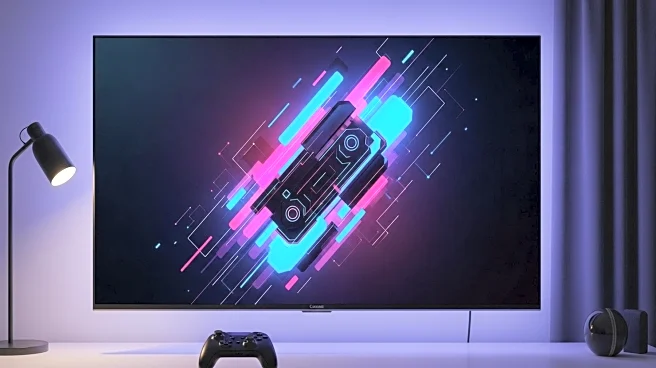What's Happening?
Netflix has announced a significant expansion in its entertainment offerings by introducing video games playable directly on smart TVs. This development was disclosed by Co-CEO Greg Peters at the Bloomberg Screentime Conference. Subscribers can now access party-friendly and casual games on their televisions using smartphones as controllers. To facilitate this, users must download the 'Netflix Game Controller' app and connect via a QR code displayed on the TV screen. The initial lineup includes games such as Boggle Party, Pictionary: Game Night, Lego Party, Tetris Time Warp, and Party Crashers: Fool Your Friends. This service is currently rolling out in select regions, including the U.S., Canada, U.K., France, Germany, and Australia.
Why It's Important?
This move marks Netflix's strategic shift to diversify its entertainment portfolio and capture a larger share of the booming video game market. With Americans spending approximately $59 billion on video games in 2024, Netflix aims to engage viewers more deeply and reduce subscriber churn. By offering games on TVs, Netflix positions itself in direct competition with console gaming and other platforms like Amazon's Luna and Apple's Arcade. This expansion could potentially increase Netflix's market share and enhance its competitive edge in the entertainment industry.
What's Next?
Netflix's introduction of video games on smart TVs is expected to evolve further, with potential expansions in game offerings and geographic reach. As the service gains traction, Netflix may explore partnerships with game developers to enhance its gaming library. Additionally, the company might invest in further technological advancements to improve user experience and game performance. Stakeholders, including subscribers and competitors, will likely monitor these developments closely to assess Netflix's impact on the gaming and streaming markets.
Beyond the Headlines
Netflix's entry into the TV gaming space could have broader implications for the entertainment industry, potentially influencing how content is consumed and monetized. This move may prompt other streaming services to explore similar integrations, leading to increased competition and innovation in the sector. Furthermore, the shift towards interactive content could redefine viewer engagement, encouraging more personalized and immersive experiences.












